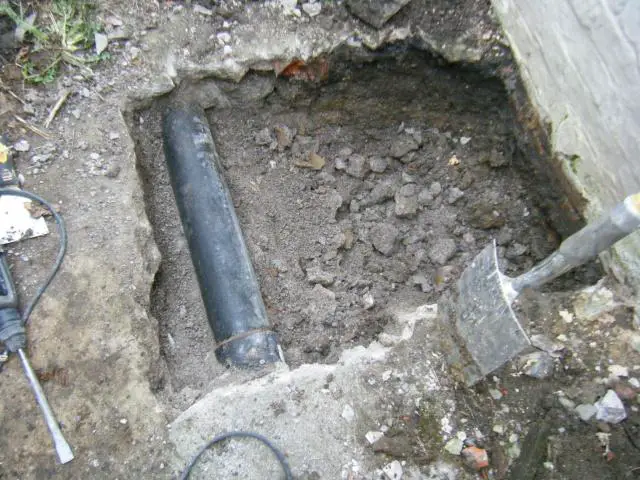I'm not sure whether this should be in plumbing or building, so I'll try here first.
At my house there's a gulley which has never drained properly, so today I've dug up the path around it, to find this:
The clay pipe from the gulley wasn't connected, which would explain it not working!
The black pipe has a small label on it that says it's 'pitch fibre', and was encased all round in concrete. The pipe is approximately 115mm in diameter, and serves my house only. It's a combined foul / rainwater system. I'd like to replace the original gulley with a new plastic roddable one, and tee into the pitch fibre pipe.
So, the questions -
1) how do I cut it?
2) what fittings / adaptors should I use to tee into it?
3) does it contain asbestos?
I'd be grateful for any help with this.
Thanks,
Mogget
At my house there's a gulley which has never drained properly, so today I've dug up the path around it, to find this:
The clay pipe from the gulley wasn't connected, which would explain it not working!
The black pipe has a small label on it that says it's 'pitch fibre', and was encased all round in concrete. The pipe is approximately 115mm in diameter, and serves my house only. It's a combined foul / rainwater system. I'd like to replace the original gulley with a new plastic roddable one, and tee into the pitch fibre pipe.
So, the questions -
1) how do I cut it?
2) what fittings / adaptors should I use to tee into it?
3) does it contain asbestos?
I'd be grateful for any help with this.
Thanks,
Mogget


